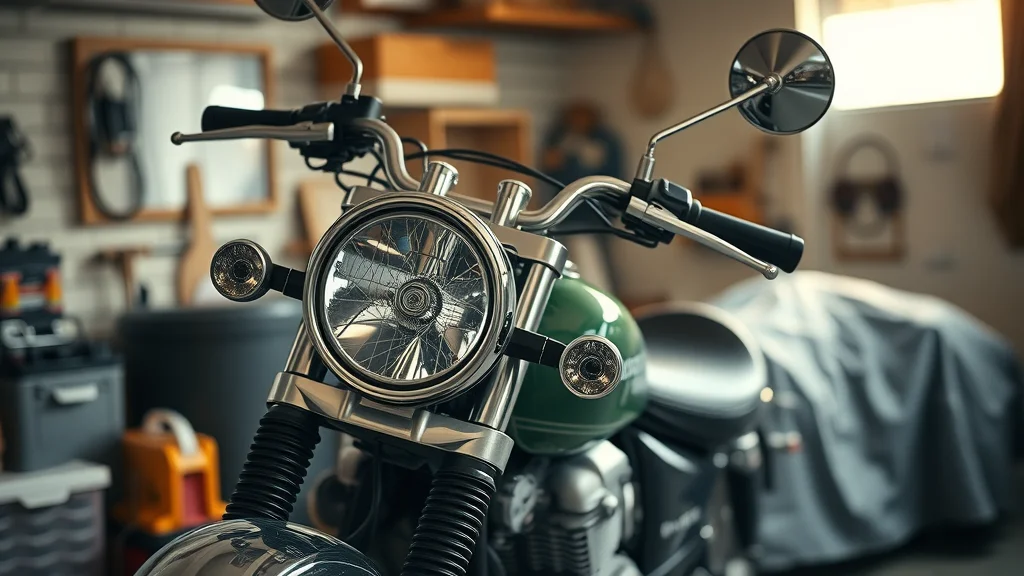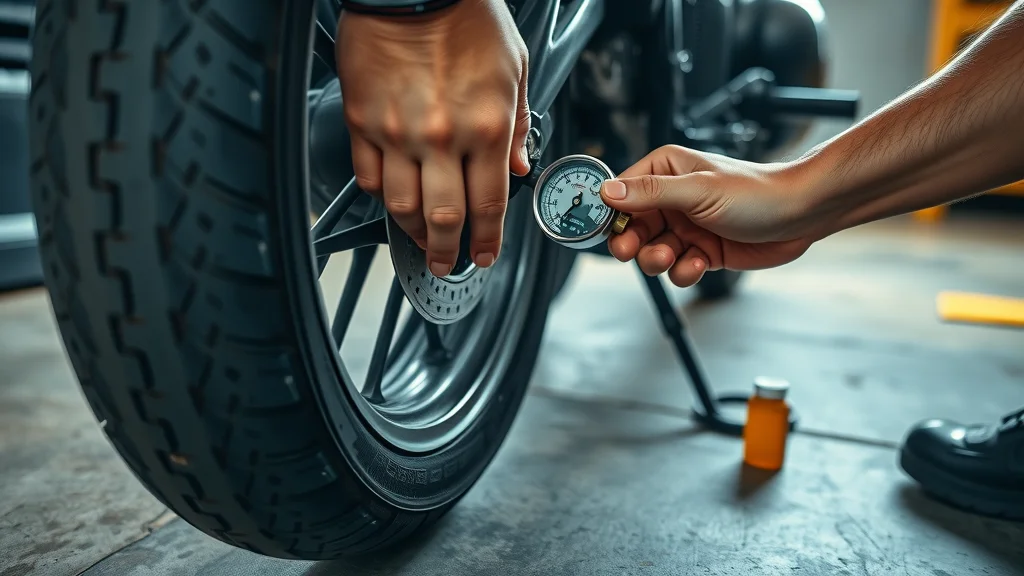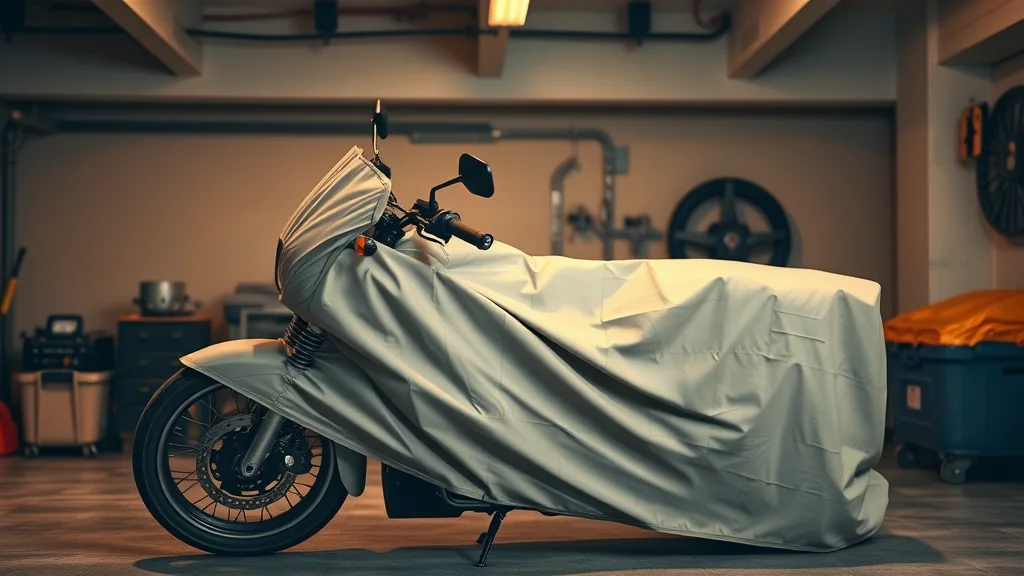Did you know improper winter storage can reduce your motorcycle’s lifespan by up to 30%? These chilly winter days bring more than icy roads—they threaten the very engine, gas tank, exhaust pipe, and electrical systems you depend on for riding season. Winterizing your bike isn’t just an expert tip; it’s a crucial step to ensure your motorcycle remains in good condition for that long-anticipated first spring ride. This comprehensive guide will show you how to winterize your motorcycle, protect your investment, and guarantee smooth rides when spring arrives.
How to Winterize a Motorcycle: Why Winter Storage Matters
"Did you know improper winter storage can reduce your motorcycle’s lifespan by up to 30%?" — Industry Expert
Properly learning how to winterize a motorcycle is vital for any rider who wants to maximize their bike’s lifespan and reliability. If you neglect proper winter storage, corrosion can silently compromise metal parts, internal condensation can damage the exhaust pipe and engine, and untreated fuel left in the gas tank can gum up crucial components. Furthermore, batteries can lose charge, and tires can develop flat spots, making for a rough start when the warmer months return. It’s not just about convenience—it’s about keeping your bike running safely and effectively for years to come.
- Prevent corrosion—from frame to exhaust pipes
- Safeguard the engine and preserve fuel system integrity
- Ensure safe, smooth starts when spring arrives
Whether you store your motorcycle in a storage unit, a heated garage, or opt for indoor storage, following a proven winterization method ensures your spring ride is as thrilling as ever and that your bike remains in good condition throughout the harshest winter days.

What You'll Learn About How to Winterize a Motorcycle
- Step-by-step process for how to winterize a motorcycle
- Tools and materials required
- Tips for ensuring good condition after winter
- Common mistakes to avoid
By the end of this article, you’ll know how to properly winterize your motorcycle, select the right tools and storage options, and avoid costly mistakes. We’ll cover essential protection solutions for your engine, gas tank, exhaust pipe, tires, and more—ensuring you can ride your bike with confidence and peace of mind when spring returns.
As you work through these winterization steps, remember that keeping your motorcycle in peak condition is an ongoing process. For more hands-on advice and updates on advanced maintenance techniques, be sure to check our latest motorcycle care resources as they become available.
Essential Tools and Materials for How to Winterize a Motorcycle
| Tool / Material | Purpose |
|---|---|
| Fuel Stabilizer | Prevents fuel system gumming and corrosion in the gas tank |
| Motorcycle Cover | Shields from dust, moisture, and temperature swings |
| Storage Unit or Indoor Storage | Protects against harsh winter days and precipitation |
| Battery Tender / Trickle Charger | Maintains battery charge and health during winter storage |
| Tire Gauge | Ensures tires are inflated to correct PSI and prevents flat spots |
| Cleaning Supplies | Removes dirt, preventing corrosion and rust |
These tools will help you keep your motorcycle in good condition, avoid grime buildup, and extend the life of components—ensuring that putting your bike back on the road is as simple and enjoyable as possible.
Step 1: Deep Cleaning—Preparing to Winterize Your Motorcycle
An often-overlooked but crucial step when you winterize your motorcycle is thoroughly cleaning the entire bike. Begin by giving the motorcycle a deep wash, using mild soap and soft brushes to remove hardened dirt, salt, and bugs from every surface—including the hard-to-reach areas near the exhaust pipes and chain. Take your time to inspect the frame, wheels, gas tank, and swingarm for any signs of damage, rust, or potential issues. Any existing damage can worsen during winter storage, so addressing them before putting your bike away is just a good idea.
- Wash and dry the motorcycle thoroughly—especially near the chain and underbody
- Inspect for scratches, nicks, and leaks; address them immediately
- Apply chain lubricant and grease on all moving parts to stave off rust and ensure that your bike remains in good condition during winter days
Deep cleaning keeps your motorcycle free from residues that accelerate corrosion. After cleaning, let it dry fully before moving to the next step. This foundational work ensures that all other winterization efforts are maximally effective.

Step 2: Fuel System and Gas Tank—Using Fuel Stabilizer for Motorcycle Winterization
The gas in your motorcycle’s tank can deteriorate and clog the fuel system over several cold winter days. That’s why using a fuel stabilizer is an important part of winterizing your bike. Fuel stabilizer prevents fuel breakdown, stops gumming inside the carburetor or fuel injectors, and helps keep your gas tank rust-free by filling up any air spaces where moisture condensation could form.
How to Add Fuel Stabilizer to Your Motorcycle
- Fill the gas tank completely to reduce air space inside
- Add manufacturer’s recommended amount of fuel stabilizer (also called fuel treatment)
- Run the engine for several minutes to circulate the treated fuel throughout the system
By treating your fuel before putting your bike into winter storage, you protect the engine for an easy start when spring arrives. Treated fuel is much less likely to cause clogging or require extensive maintenance later on. This simple act pays off in engine health and hassle-free rides come the next warm day.
Step 3: Battery Care—Keep Your Motorcycle in Good Condition
The cold can sap power from your motorcycle battery, leaving it dead when you want to ride your bike. Leaving your battery connected and idle during winter days is a recipe for disappointment. Instead, follow these steps to ensure that your battery stays in good condition:
- Carefully remove the battery from the motorcycle
- Store it in a cool, dry location (never directly on concrete)
- Connect to a battery tender or trickle charger to maintain an optimal charge over the winter
Batteries naturally discharge, and extreme temperatures make this worse. Battery tenders keep your battery ready for action. If you don’t use a tender, charge the battery every few weeks. This way, when spring arrives, you won’t waste any time in the garage—you’ll be ready to ride your bike safely and confidently.

Step 4: Engine and Exhaust Pipe Protection During Winter Storage
Even when you’re not riding, your engine and exhaust pipes are vulnerable to moisture, rust, or even critter invasion if not properly secured. Protecting these components is an essential step when you winterize your motorcycle. Start by ensuring your engine is at operating temp after running stabilized fuel through the system, and avoid leaving the spark plugs exposed or the exhaust pipe open to the elements.
How to Protect Exhaust Pipes
- Plug exhaust pipes with clean, dry cloths or use commercially available covers designed for motorcycles
- This prevents internal condensation and stops rodents or insects from crawling inside over winter days
"Moisture in the exhaust pipe is one of the leading causes of winter motorcycle engine trouble."
This step can save you from costly repairs or frustrating troubleshooting when you start your bike after winter storage. Making this a routine part of your winterization process adds reliable protection for vital engine parts.
Step 5: Lubrication, Fluids, and Tires—How to Winterize Your Bike Completely
Don’t let neglect during winter storage cause expensive surprises in the spring. Before you put your motorcycle away, make sure all fluids are topped up and lubricants are fresh. Changing engine oil and replacing the filter ensures no contaminants sit inside the engine for months, which could lead to corrosion or sludge when you want to ride your bike next season.
- Change engine oil and filter—even if recently replaced—to prevent contaminants from settling
- Top up coolant and brake fluid levels to avoid condensation-related problems
- Inflate tires to their recommended PSI and use stands if possible—flat spots are a common issue in winter storage
Additionally, lubricate clutch levers, cables, and pivot points to keep everything moving freely. Properly winterized fluids and tires mean your motorcycle will be in good condition and ready to roll the second spring arrives.

Step 6: Choosing the Right Storage Solution: Storage Unit vs Indoor Storage
Where and how you store your bike over the winter days will hugely impact its condition. The debate between renting a storage unit or using indoor storage at home depends on your climate, budget, and garage space. A heated garage or finished basement offers excellent protection against temperature swings, but not every rider has this luxury, especially in colder climates or urban settings.
- Storage unit: Secure, weatherproof, and accessible but can cost extra and sometimes lacks climate control
- Indoor storage: A garage or basement provides stable temperature and security, ideal for harsh winter days but may require further space and preparation
- Regardless of location, always cover your motorcycle with a quality motorcycle cover for another layer of protection from dust, pests, and stray moisture
Finding the right winter storage solution helps you properly winterize and safeguard your investment. The effort keeps your motorcycle in good condition and speeds up preparation when spring finally arrives.
Step 7: Cover and Check—Final Preparations to Winterize Your Motorcycle
With all mechanical tasks complete, the last step is to securely cover your motorcycle and double-check your work. Moving the bike to its storage location, be sure it sits upright or on a center stand if possible, to prevent strain on the tires or suspension. Place a high-quality motorcycle cover over the bike, ensuring full coverage—including wheels, seat, and controls.
- Cover your motorcycle securely, even in a garage or storage unit
- Do a final walk-around, checking all steps: fuel stabilizer used, battery tended, fluids topped, exhaust pipes plugged, and tires inflated
This vital step keeps your winterized motorcycle dust-free, rust-resistant, and ensures nothing is overlooked before the long winter days start. When you properly winterize your bike, it’s ready for adventure the moment you are.

Insurance and Motorcycle Coverage Considerations During Winter Storage
Many riders think about maintenance but forget about the importance of reviewing their motorcycle insurance policy during winter storage. Whether you store your motorcycle in a storage unit or your home garage, updating your motorcycle insurance and understanding your motorcycle coverage options can save you from unnecessary costs in case of theft, fire, or accidental damage.
Reviewing Your Motorcycle Insurance Policy
- It’s always a good idea to review your insurance policy each season, ensuring you’re covered for winter risks
- Motorcycle insurance providers may offer reduced rates for stored bikes or extra coverage for storage units and indoor storage situations
- Staying updated on your policy gives you peace of mind and financial protection while your motorcycle is not in use
Comprehensive motorcycle coverage—whether maintained year-round or adjusted for storage periods—protects your investment and guarantees you can ride your bike with confidence once spring returns.

People Also Ask: What Needs to Be Done to Winterize a Motorcycle?
- Clean and dry the bike—including hidden areas
- Add fuel stabilizer to the gas tank and run the engine to circulate
- Remove and maintain the battery with a tender
- Check all fluids, lubricate moving parts, and plug exhaust pipes
- Cover and store your bike in a protected, secure spot
By thoroughly following these steps, you ensure that your bike will be in good condition and avoid the most common winter storage pitfalls. Taking a little time now means you’ll spend less time in the garage—and more on the open road when spring riding season arrives.
People Also Ask: Is it Okay to Leave Gas in a Motorcycle Over Winter?
- Leaving untreated gas in your gas tank can degrade the fuel system. Always use a fuel stabilizer or drain the tank completely before storing your motorcycle for winter.
Using fuel treatment is essential to stop varnish buildup and keep your motorcycle safe. Treating your gas tank before storage helps prevent more expensive repairs and ensures smooth starts after winter days.
People Also Ask: What is the 2 4 12 Second Rule on a Motorcycle?
- The 2-4-12 second rule refers to recommended safe following distances and reaction times when riding a motorcycle. Review your motorcycle insurance and practice safe riding after winterization.
This safety rule helps you maintain proper space and reaction time when you ride your bike, especially after it comes out of winter storage. Combined with a properly winterized motorcycle, adherence to safety rules means a longer, accident-free riding season.
People Also Ask: What Does 2 Fingers Up Mean on a Motorcycle?
- The ‘two fingers up’ gesture is a common friendly greeting among motorcycle riders, symbolizing respect and camaraderie—especially after a safe ride out of winter storage.
After you winterize your motorcycle and hit the road again, don’t forget to share in this tradition—reminding you and others to always value safety, friendship, and the community spirit among riders.
FAQs on How to Winterize a Motorcycle
-
How early should I begin to winterize my motorcycle?
It’s a good idea to start the winterization process a couple of weeks before the first hard frost. This gives you enough time to source needed materials, perform maintenance, and address any last-minute repairs without feeling rushed. -
Can I use any motorcycle cover?
While there are lots of ways to cover your bike, always opt for a breathable, fitted motorcycle cover. Generic covers may trap moisture or leave gaps. Specific motorcycle covers are designed for breathability and complete protection, whether you use a storage unit or indoor storage. -
What maintenance should I perform before the first spring ride?
Before you ride your bike after winter storage, inspect your tires, check all fluids, reconnect and charge your battery, and test brakes and lights. Check the gas tank for any old fuel, replace the spark plugs if necessary, and clean/lubricate the chain. A quick once-over ensures your motorcycle is in good condition for the new riding season.
Key Takeaways: How to Winterize a Motorcycle
- Thorough preparation ensures good condition for your bike throughout winter storage
- Use fuel stabilizer and store your bike in a secure location with a quality motorcycle cover
- Motorcycle insurance coverage is important all year—review your policy for peace of mind
Step-by-step demonstration: Watch a rider methodically preparing a motorcycle for winter storage in a garage—including washing, adding fuel stabilizer, unplugging battery, covering, and checking insurance—all in a clear, instructional, well-lit home setting.
Experts share practical winter storage and insurance tips—learn from seasoned pros to ensure your motorcycle remains protected all season long.
Conclusion: Protect Your Investment—Winterize Your Motorcycle Effectively
"Proper winterization saves time, money, and ensures memorable riding seasons ahead."
Safeguard your ride for the long haul. Take the steps now, and your bike will repay you with reliability come spring.
If you’re eager to keep your motorcycle in top shape year-round, there’s always more to discover beyond winterization. As our site grows, you’ll find in-depth guides, expert tips, and the latest updates on motorcycle performance and care at Nasty Performance’s main resource hub. Whether you’re looking to master seasonal maintenance or explore advanced upgrades, staying informed is the key to a safer, more enjoyable ride. Bookmark our site and check back soon for new articles and insights tailored to passionate riders like you.
Ready to Winterize Your Motorcycle? Call Nasty Performance Motorcycle Shop Today: 847-458-4858
Don’t wait for the cold to take its toll—schedule your winterization service and ride stress-free all year!
 Add Row
Add Row  Add
Add 



Write A Comment